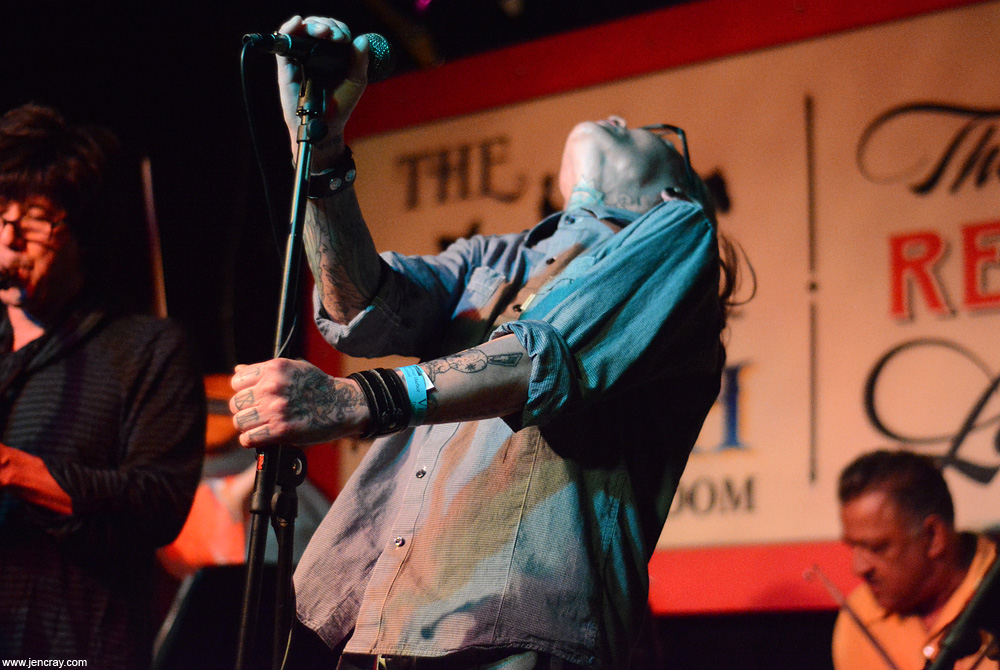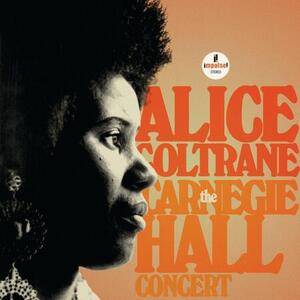
Quintron and Miss Pussycat
with Obliterati, Manic and the Depressives
Will’s Pub, Orlando • 12/11/2015
by Julius C. Lacking
I missed the first band. I don’t like it when that happens, since these are usually the people who can benefit the most from being seen and described. I was only twenty minutes late, but they one-upped me with a 15-minute set, according to reports from those present. Punk rock. Additionally, they were described as sounding at home in the SST catalog, which I paraphrase and probably only means something to old codgers like me. But mind you, that means a lot. I recommend you investigate, and I will do so myself, and we will both be punctual about it, because these kids wait for no one.

During an intermission made interminable by puzzlement over when the goddamn empanada truck parked outside the venue was going to start vending, Obliterati carefully set an odd collection of gear on the stage. The set list legible from the front of the stage promised a sequence of obliquely pornographic song titles. There was the traditional guitar, drums, and bass, but over to the left, heavy-duty pedalboards intermingled with a violin and saxophone, class differences set aside for whatever was to come. I wondered what was to come.

What came was unbridled disco skronk. The band launched into their first number, “Rubber Prol”, an instrumental that provided a clear and focused introduction to the forthcoming sound, and vocalist Lisa Bugayong, wiry and energetic in a blue-sided proto-mohawk, ambulated around the stage like a general inspecting troops without the distractions of having to be in front of a microphone. As drummer Nadeem Kahn pounded out the pulse on the drums, some sort of industrial stamping machine brought to human form, bassist Tony Christy, saxophonist Jim Ivy, and violinist Sarah Morrison began interweaving minimalist riffs, building textures and tensions for guitarist Steven Garnett to inject with some focused stringwork and occasional keywork.

Working as a single unit, Obliterati did their damnedest to get the crowd dancing, lobbing every weapon they had in the feet-moving arsenal against an audience implacable in their desire to stand in one place, shuffling aside only to admit more combatants to the warming (not) dance floor. Some agitation was visible here and there, but honestly, the place should have been a seething mass of movement from the oscillations coming off the stage. It’s hard to pigeonhole exactly what Obliterati is doing, without resorting to a potpourri of genre names, but it’s smart like jazz and snotty like punk, hypnotizing like a Glass composition and energizing like a Slayer one, a throwback to that obscure NYC scene that gave us Blondie, Zorn, and Television, and it’s something that’s as hard to ignore as it is to categorize.
More waiting and speculating ensued, this time thoughts turning away from food (empanadas were purchased and consumed) and towards the large black-plastic-obscured construct that was hurriedly carried onto stage, and the variety of sound production tools that were arrayed beside it. What sort of spectacle was going to take up a third of the stage?

The show began, the sheeting was removed and a fanciful Puppet Proscenium was revealed. When we’re young. cynicism towards puppets sets on even before we feel like chumps for believing that Santa crap. It’s one of the first things we declare to be too childish for our maturing tastes, earliest in a long parade of poor choices that sacrifice simple pleasures for more sophisticated and tedious adult behavior. Fuck that noise. This was some real puppet voodoo, the magical discontinuity of a developing imagination handily replaced by an unexpected storyline and presentation.

To wit: Our princess protagonist is moving to Goblinburg, and has to find a place to live. She interviews several buildings, before meeting the mayor of Goblinburg, who steals her crown and turns her into some sort of Jabba-esque sofa pillow. He gives her a giant tube of goblin goo in return, and she squeezes out a bunch, and it turns into a house that turns into a castle, then the whole puppet proscenium turns into a blow-up castle. With its puffed appearance, cartoon voices, roughly synthesized soundtrack, and no-LSD-required psychedelic bent, nothing else comes close to the ’70s Mexican children’s television that was Juan GarcÃa Esquivel’s third coming.

Once the story was over and the pupaphobes could breathe a sigh of relief, it was time for Quintron to take possession. Ambling onto the stage in a regal cape, Quintron sat behind an organ podium decorated with a car grill and headlights, surrounded by his keyboard and a variety of noisemaker gizmos including a vaunted Drum Buddy, and launched into a fugue of sound that did not let up for the rest of the evening, only pausing about a minute in to get rid of the damn cape. Ostensibly, Quintron plays keyboards, Hammond and Rhodes organs, but he supplements that with a hi-hat on his left foot, miscellaneous electrical (not necessarily electronic) noisemakers and percussion, and the aforementioned Drum Buddy.
The Drum Buddy merits its own paragraph, really. An invention and construction of Quintron’s, it blends three devices ancient and mystical – the Analog Synthesizer, the Victrola, and Brion Gysin’s Dreamachine – into an electrically-powered instrument that is wholly present in the universe of observable physics. As a coffee can with holes punched out of it rotates on a turntable, it releases light from the bulb located inside, triggering optical sensors wired to the synthesizer. While the can spins at a steady rate, you get something like a drum machine, but you are free to reach out at any time and stop the can, or spin it harder, for stuttering and deathspiral effects. Additionally, you can dim the bulb, which does stuff, or mess with the many knobs, which does more stuff. There are videos on the internet, and if you are at all intrigued by this, I recommend you watch them.

As incredible as the Drum Buddy is by itself, it takes on a life of its own in the hands of a master. Quintron doesn’t just play his instruments, he cajoles them like a skilled animal trainer. The Hammond hoots, squeals, and screams as he scratches, caresses and stabs at the keys. The Rhodes bubbles out rumbling bass lines as he rubs the fur the wrong way. The hi-hat springs occasionally to life to punctuate something, like a startled peacock. A drumstick magically appears now and then to teach the percussion some manners, and despite all this, Quintron still finds ample time to fiddle with the Drum Buddy and who-knows-what-else on that automobile podium of his.
Next to this seething cacophony stood a frocked Miss Pussycat, grinning under a pom-pom, fists held at midriff and clutching some Flintstones-looking shakers. Set aside all innuendo, and let me say she shook her maracas all night long, and I’m not sure how she did it. That stuff is exhausting. At times she was joined by the similarly retro-clad merch chick, who had her own set of shakers, and together they provided a Laugh In dancers vibe to the stage. Miss Pussycat also possesses a fine voice of her own to ride and goad the monster beast of sound coming from her right, punctuating things in gleeful yelps that are reminiscent of the B-52s.

By the time all this was unfolding, the place was filled, and roiling. The music poured out in an unending stream, and I am only haphazardly familiar with Quintron’s vast and unkempt musical output. No matter. I wasn’t there for the hits. I was there for the overwhelming warble, and I got what I needed. The stage was a split-screen hallucination. On the left Quintron behind the wheel of a car bearing down on you, hands everywhere but the wheel, feet everywhere but the pedals, all roar and no screech. On the right, kindergarten flashbacks to a brightly patterned singalong world. It’s a fractured kaleidoscope of innocence and debauchery that no one should miss. ◼
Quintron and Miss Pussycat: http://www.quintronandmisspussycat.com/












